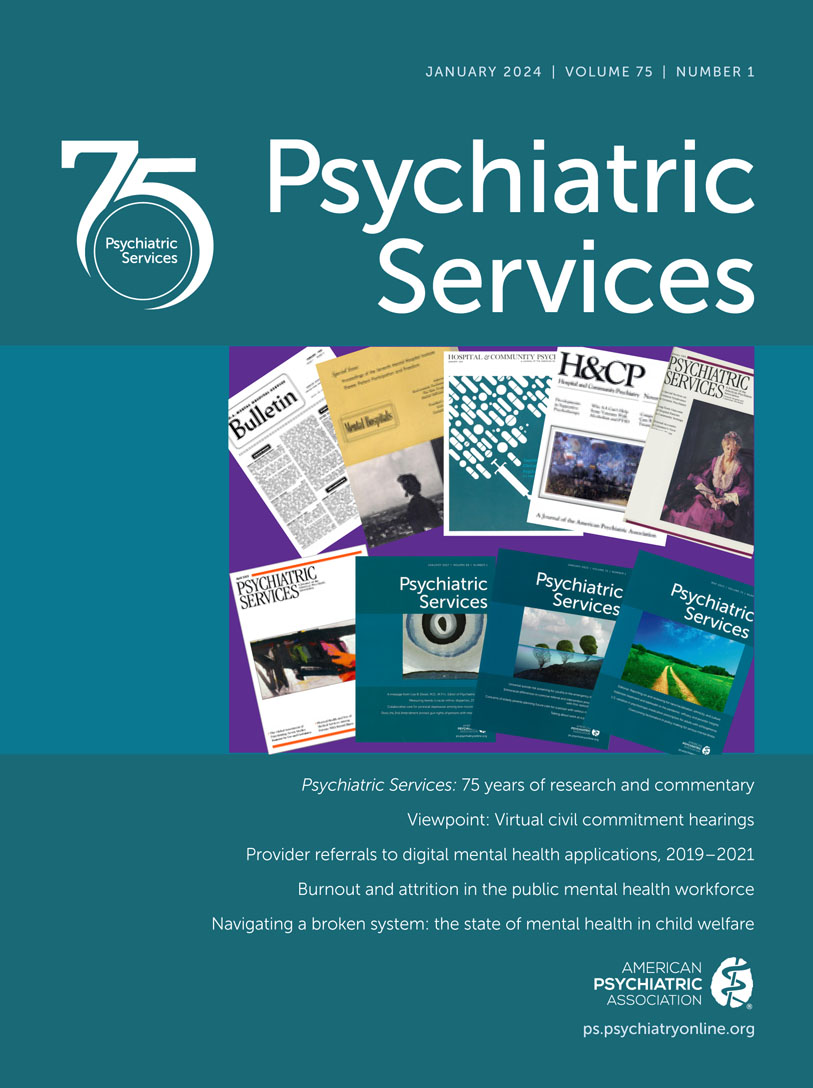Types of Psychiatric Beds and Mental Health Services in 16 Latin American Countries, 1990–2020
Abstract
Objective:
Latin America has undergone major changes in psychiatric services over the past three decades. The authors aimed to assess the availability of service data and changes in psychiatric services in this region during the 1990–2020 period.
Methods:
The authors formed a research network to collect data on psychiatric service indicators gathered between 1990 and 2020 from national registries in Argentina, Bolivia, Brazil, Chile, Colombia, Costa Rica, Dominican Republic, Ecuador, El Salvador, Guatemala, Honduras, Mexico, Panama, Paraguay, Peru, and Uruguay. Indicators included psychiatric beds in psychiatric and general hospitals overall, for children and adolescents, and for forensic populations; residential beds for substance use treatment; treatment slots in residential facilities and day hospitals; and outpatient facilities.
Results:
Data availability varied among countries, service indicators, and time points. The median prevalence of psychiatric beds decreased in psychiatric hospitals from 5.1 to 3.0 per 100,000 people (−42%) and in general hospitals from 1.0 to 0.8 (−24%). The median prevalence estimates of specialized psychiatric beds for children and adolescents (0.18) and for forensic populations (0.04) remained unchanged. Increases in prevalence were observed for residential beds for substance use treatment (from 0.40 to 0.57, 43% increase), available treatment slots in residential facilities (0.67 to 0.79, 17%), treatment slots in day hospitals (0.41 to 0.54, 32%), and outpatient facilities (0.39 to 0.93, 138%).
Conclusions:
The findings indicate that treatment capacity shifted from inpatient to outpatient and community care. Most countries had a bed shortage for acute psychiatric care, especially for children and adolescents and forensic patients. More comprehensive and standardized mental health service registries are needed.
Access content
To read the fulltext, please use one of the options below to sign in or purchase access.- Personal login
- Institutional Login
- Sign in via OpenAthens
- Register for access
-
Please login/register if you wish to pair your device and check access availability.
Not a subscriber?
PsychiatryOnline subscription options offer access to the DSM-5 library, books, journals, CME, and patient resources. This all-in-one virtual library provides psychiatrists and mental health professionals with key resources for diagnosis, treatment, research, and professional development.
Need more help? PsychiatryOnline Customer Service may be reached by emailing [email protected] or by calling 800-368-5777 (in the U.S.) or 703-907-7322 (outside the U.S.).



